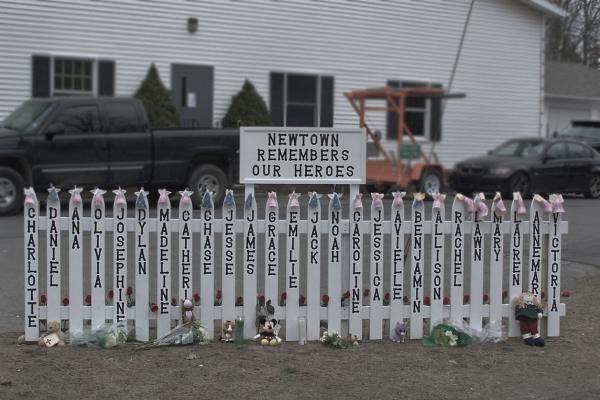EARLY THIS YEAR, I was invited to the White House for an important meeting. A young couple entered at the same time I did, carrying their baby—which struck me as unusual for a meeting with leaders at the White House.
They introduced themselves and their 15-month-old daughter. Then the couple told me this: “Her 6-year-old sister was shot and killed at Sandy Hook Elementary School in Newtown, Conn.”
Then I understood. They were there for the same meeting I was—President Obama’s announcement of new executive actions on background checks and other gun enforcement and safety issues.
The East Room of the White House was full of the victims and family members of victims of mass shootings, which occurred 372 times in 2015, killing 475 people and wounding 1,870. (As defined by the Mass Shooting Tracker, a mass shooting is any in which four or more people are shot.)
Many families that had lost children or parents were there. Former member of Congress Gabby Giffords and her husband, Mark Kelly, were there. Many remember the 2011 shooting in Tucson, Ariz., in which a man suffering from paranoid schizophrenia shot 19 people, including Rep. Giffords, six of whom were killed, including a 9-year-old girl.
IT WAS THE PEOPLE and the faces that most moved me—and moved the president. Much was made the next day of his emotional response. When he said, “Our unalienable right to life and liberty and the pursuit of happiness—those rights were stripped from college kids in Blacksburg and Santa Barbara, and from high-schoolers in Columbine, and from first-graders in Newtown,” he had to wipe tears away from his eyes.
"Every time I think about those kids, it gets me mad," Obama said. "And by the way, it happens on the streets of Chicago every day."
I have seldom seen President Obama so emotional. I know the hardest day of his presidency was when he had to go to Newtown to meet and talk to the families of the 26 students and teachers who had lost their lives to another mass shooter. And it is clear to me that Obama was responding as a dad who has two girls of his own.
I think his emotional reaction is also partly because he feels so helpless to do the things that will matter to save these lives. At that meeting in early January, President Obama announced limited executive actions within his authority—such as working to narrow or close background check loopholes, hiring more ATF agents, increasing funding for mental health treatment, and supporting gun safety technology—all of which will save some lives.
But there is so much more our country could do—except we haven’t yet been able to, because the gun lobby blocks any meaningful legislation from getting through Congress. Real, long-term changes will have to go through Congress, but few believe Congress will act.
THE COUPLE I MET ended the story about their slain daughter with these words, “And nothing has been done by Congress to stop this.”
Sitting in that room, watching a president with tears in his eyes and seeing the tears of so many victims’ families, I asked myself: What can churches do—what can be done by Christians, who say every life is sacred, Jesus’ followers whom he called to be peacemakers?
Passing common sense gun and gun-safety regulations feels like a lost political cause in this country these days, even though most Americans—even most gun owners—support such measures and they clearly have saved lives all over the world.
But aren’t Christians supposed to support “lost causes” and change them? Haven’t we done that throughout our history? A president in tears because he feels so helpless and a room full of families who have lost their dearest loved ones made me say to myself: It is time for Christians to stop, pray, sit down together, and talk, and ask the Lord what we are called to do.
I pray that as we go forward in 2016, a year during which it’s likely that another 30,000 people in this country will lose their lives to gun violence, we find the courage to join together in this critical task of discernment, which must then lead to action.

Got something to say about what you're reading? We value your feedback!

